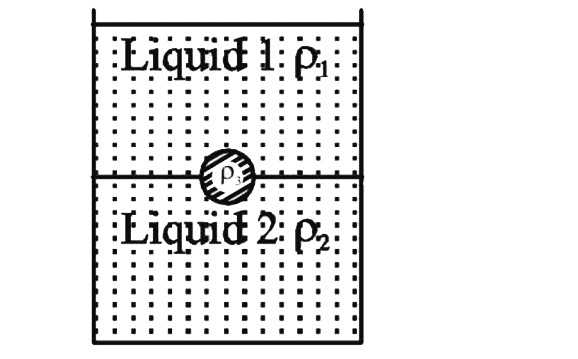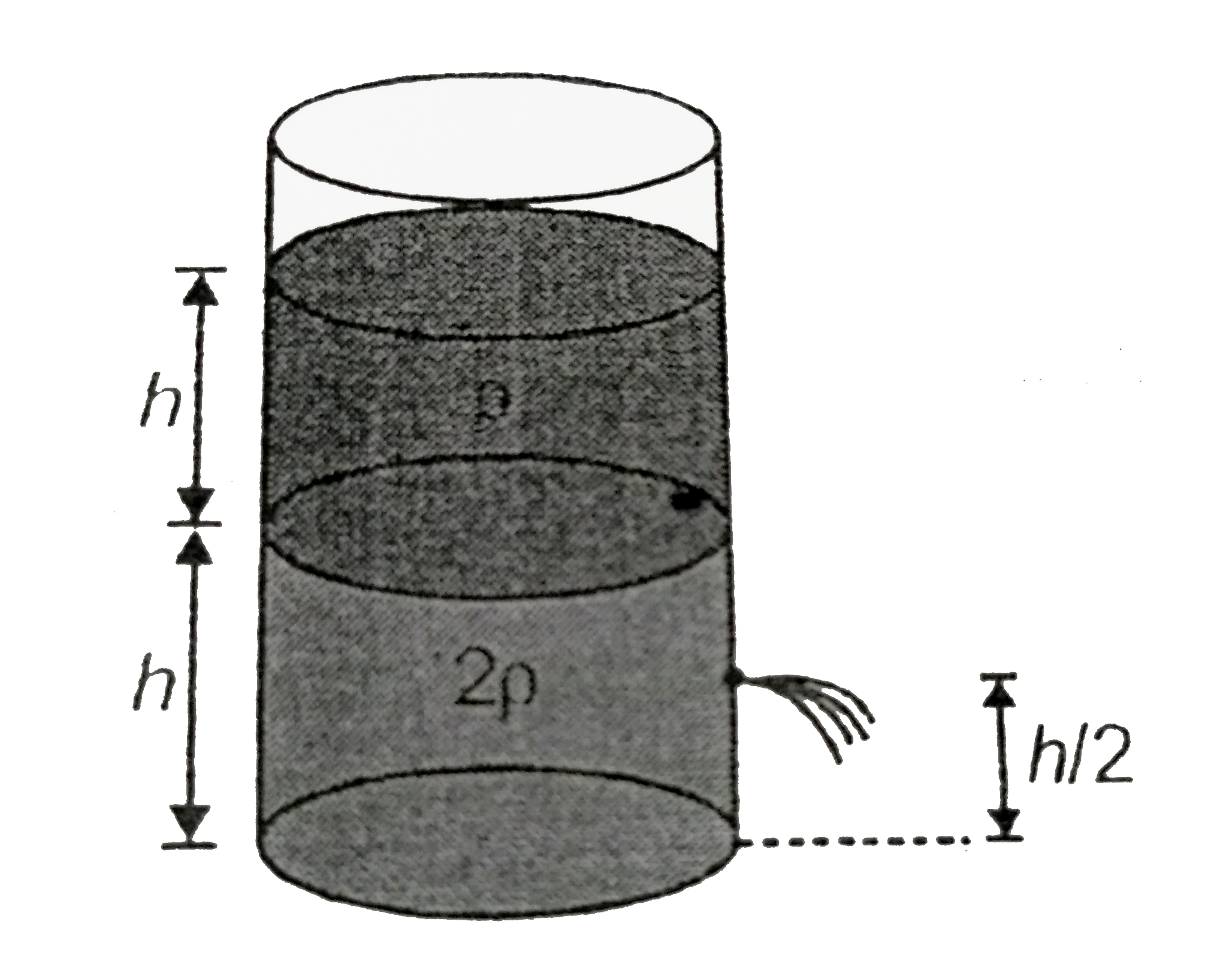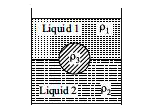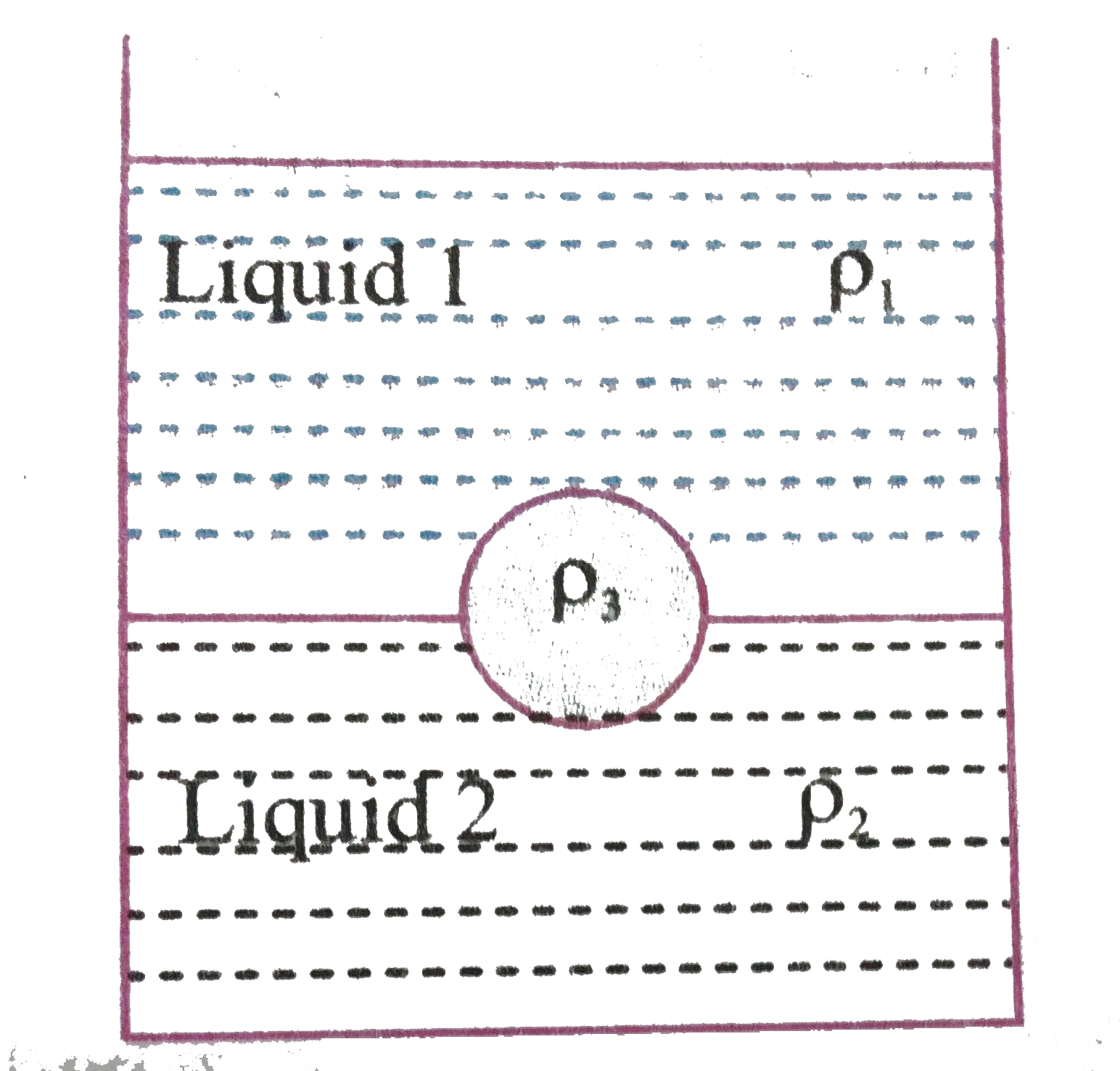A jar is filled with two non-mixing liquids 1 and 2 haivng densities ρ1 and ρ2 respectively. A solid ball, made of a material of density ρ3 , is dropped in the jar. It comes to equilibrium in the position shown in the figure. Which of the following is true for ρ1, ρ1 and ρ3?

(a) ρ3<ρ1<ρ2
(b) ρ1>ρ3>ρ2
(c) ρ1<ρ2<ρ3
(d) ρ1<ρ3<ρ2
The correct Answer is:D
From the figure it is clear that liquid 1 floats on liquid 2. The lighter liquid floats over heavier liquid. Therefore
we can conclude that ρ1<ρ2
Also ρ3<ρ2 otherwise the ball would have floated in liquid 1. From the above discussion we conclude that ρ1<ρ3<ρ2.
Topper's Solved these Questions
- MECHANICAL PROPERTIES OF MATTER AND FLUIDSBOOK - SUNIL BATRA (41 YEARS IITJEE PHYSICS)CHAPTER - MECHANICAL PROPERTIES OF MATTER AND FLUIDSEXERCISE - Subjective Problems
1 Videos
- LAWS OF MOTIONBOOK - SUNIL BATRA (41 YEARS IITJEE PHYSICS)CHAPTER - LAWS OF MOTIONEXERCISE - JEE Main And Advanced
79 Videos
- MOMENTUM & IMPULSEBOOK - SUNIL BATRA (41 YEARS IITJEE PHYSICS)CHAPTER - MOMENTUM & IMPULSEEXERCISE - JEE Main And Advanced
30 Videos
Similar Questions
A vessel is filled with two different liquids of densities ρand2ρ respectively as shown in the figure. The velocity of flow of liquid through a hole at height h2 from bottom is

View SolutionIf two liquids of same masses but densities ρ1andρ2 respectively are mixed, then the density of mixture is given by
View Solution
Knowledge Check
A jar is filled with two non-mixing liquids 1 and 2 having densities ρ1 and ρ2 respectively. A solid ball, made of a material of density ρ3, is dropped in the jar. It comes to equilibrium in the position shown in the figure. Which of the following is true for ρ1,ρ2 and ρ3 ?
 Aρ1<ρ3<ρ2Bρ3<ρ1<ρ2Cρ1>ρ3>ρ2Dρ1<ρ2<ρ3
Aρ1<ρ3<ρ2Bρ3<ρ1<ρ2Cρ1>ρ3>ρ2Dρ1<ρ2<ρ3
A jar filled with two non-mixing liquid 1 and 2 having densities ρ1 and ρ2 respectively. A solid ball, made of a material of density ρ3 is dropped in the jar. It come to equilibrium in the position shown in the figure. Which of the following is true for ρ1,ρ2 and ρ3?Aρ1<ρ<ρ3Bρ1<ρ3<ρ2Cρ3<ρ1<ρ2Dρ1<ρ3<ρ2If two liquids of same mass but densities ρ1 and ρ2 respectively are mixed, then the density of the mixture is:
Aρ=ρ1+ρ22Bρ=ρ1+ρ22ρ1ρ2Cρ=2ρ1ρ2ρ1+ρ2Dρ=ρ1ρ2ρ1+ρ2
If two liquids of same masses but densities ρ1andρ2, respectively are mixed, then the density of mixture is given by
View SolutionIf two liquids of same volume but different densities ρ1 and ρ2 are mixed, then the density of the mixture is:
View SolutionTwo planets have radii r1and2r1 and densities are ρ1and4ρ1 respectively. The ratio of their acceleration due to gravities is
View SolutionIf two liquids of same volume but different densities ρ1andρ2 are mixed, then density of mixture is given by
View SolutionIf two liquids of same volume but different densities ρ1andρ2 are mixed, then density of mixture is given by
View Solution
